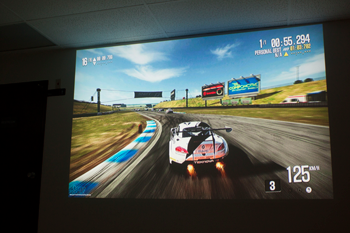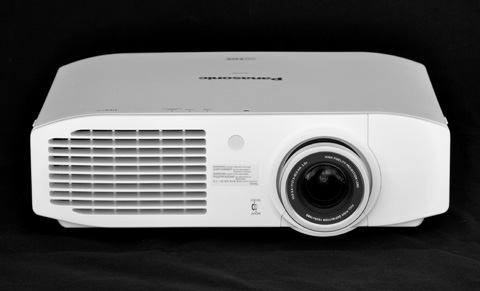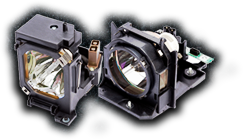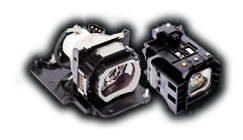Today’s projectors have elevated the gaming experience to all new levels. But if you’re considering purchasing a projector for video gaming, not just any projector will do.

In fact, gaming projectors hug the line between home theater projectors and business presentation projectors. That means gaming projectors need to be able to project data images and video images. Many projectors designed for “home entertainment” meet this requirement, and increasingly, there are projectors that are designed just for gamers. There are many options available today. So how can you decide? To choose the best video game projector, you need to consider resolution, brightness, refresh rate and contrast.
Native Projector Resolution
Today’s video games are becoming more and more cinematic, and that’s why resolution is so important. XGA and SVGA projectors, which were well in the classroom or for business presentations, just won’t cut it for gaming. For the best results, opt for a true HD projector, with a native 1080p resolution. This will ensure the best image quality, and the good news is Full HD gaming projectors are becoming more and more affordable. There are tons of options with 1080p native resolution, including the BenQ HT1075 and the Panasonic AR100U.

Projector Brightness
Brightness is determined on two factors: ambient light in your game room and the size of the screen you want to project. For instance, if you’re gaming room receives a fair amount of sunlight during the day, you’ll need to opt for a brighter projector. Projectors with brightness ratings of 3,000 lumens or greater would be necessary for a space with tons of natural light. If you’re in a very dark room, you can choose sometime less bright. The Optoma GT1080 is one option that provides excellent image results in a variety of settings.
Plus, screen size also helps determine the brightness you will need. One rule of thumb: Larger screen sizes require brighter projectors. So if you want a massive image – who doesn’t when gaming – you’ll need a brighter projector, especially in spaces with lots of ambient light. The largest screens of 100+ inches or greater require brighter projectors, rated at 3,000 lumens or higher. Smaller screen from 50-100 inches can be supported by a projector rated at between 1,000 and 2,000 lumens.
Projector Refresh Rate
Refresh rate – or the speed at which your projector processes video – is especially important in gaming. A better refresh rate results in more detailed, continuously flowing images. Many projectors are designed with specific gaming modes, which boost refresh rate for gaming or 3D video. As for specific refresh rates, 120Hz is a good benchmark, although the next level up 240Hz may be better suited for gaming. If the budget allows, a faster refresh rate is generally better.
Projector Contrast Ratio
Contrast ratio is a measure of color contrast, and it’s important in gaming because many games have varied color ranges. That means your projector needs to handle very dark moments, as well as brighter images during game play. Projectors with lower contrast ratios won’t display images as crisply and detail may be lost in the shadows. The greater the contrast ratio, the better and brighter the image will be. For gaming, a 100,000:1 ratio or better will provide the best image results, but these projectors also cost more. Or something in the 40,000:1 contrast ratio range is another alternative.
MyProjectorLamps.com is your source for low-cost replacement projector lamps. Whether you need a replacement projector bulb for your gaming or home theater projector, you’ll find the best price and selection here.


